Four “crazy” magazine features that proved incredibly practical
Let’s get nuts. (And bolts.)
Our university magazine partners have a penchant for innovative ideas, which Traina is always happy to indulge. When a creative editorial team meets an agency that brings wild ideas to life, award-winning work will follow.
UC San Diego Magazine, formerly known as Triton, has earned medals from the Council for Advancement and Support of Education (CASE) every year of our partnership. But the award-winning innovations we’ve made go well beyond eye candy—many of the wildest ideas were creative solutions to problems behind the scenes. You’d never know this without the backstory, so here’s the scoop behind some of our most out-there creations:
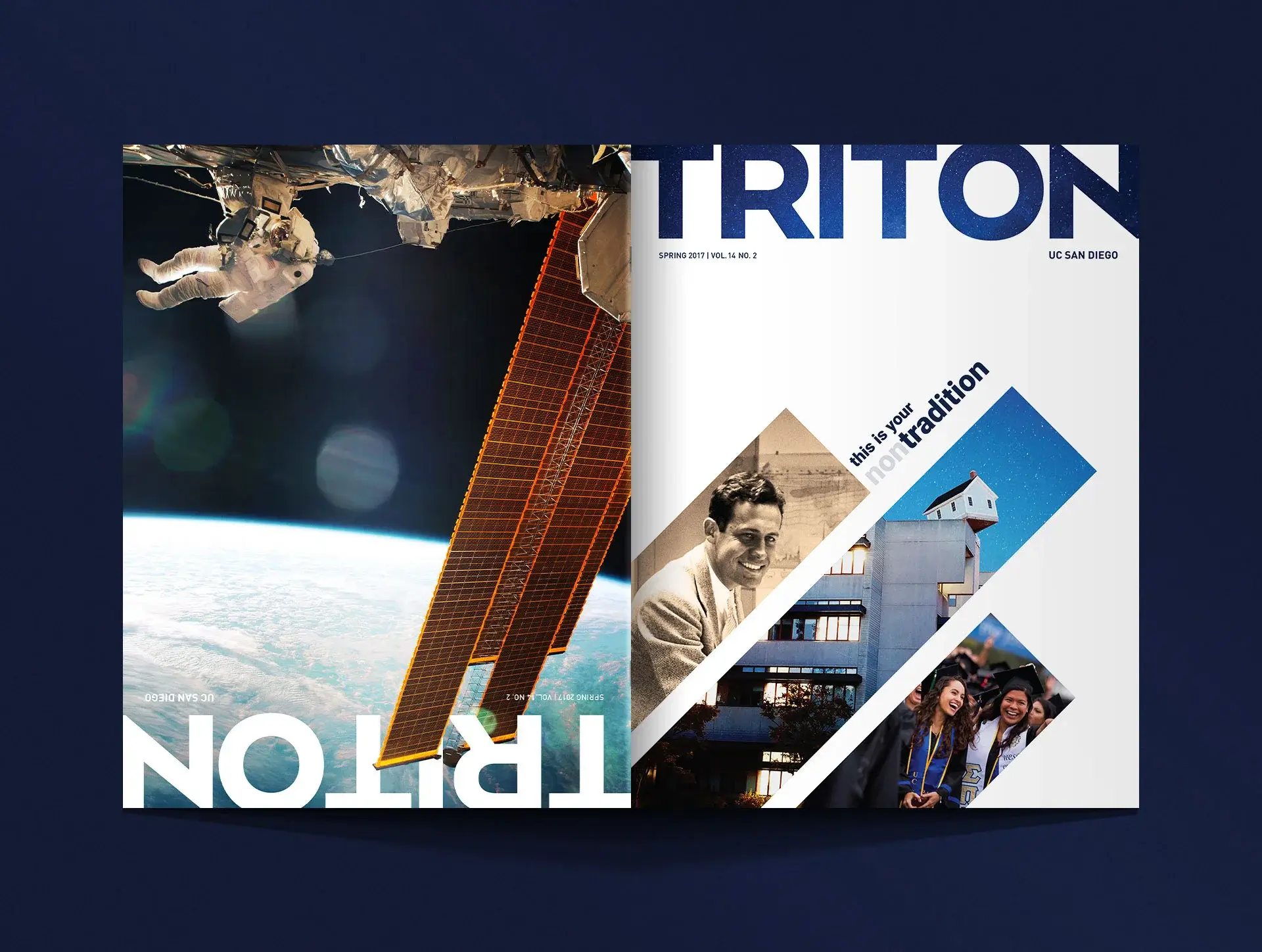
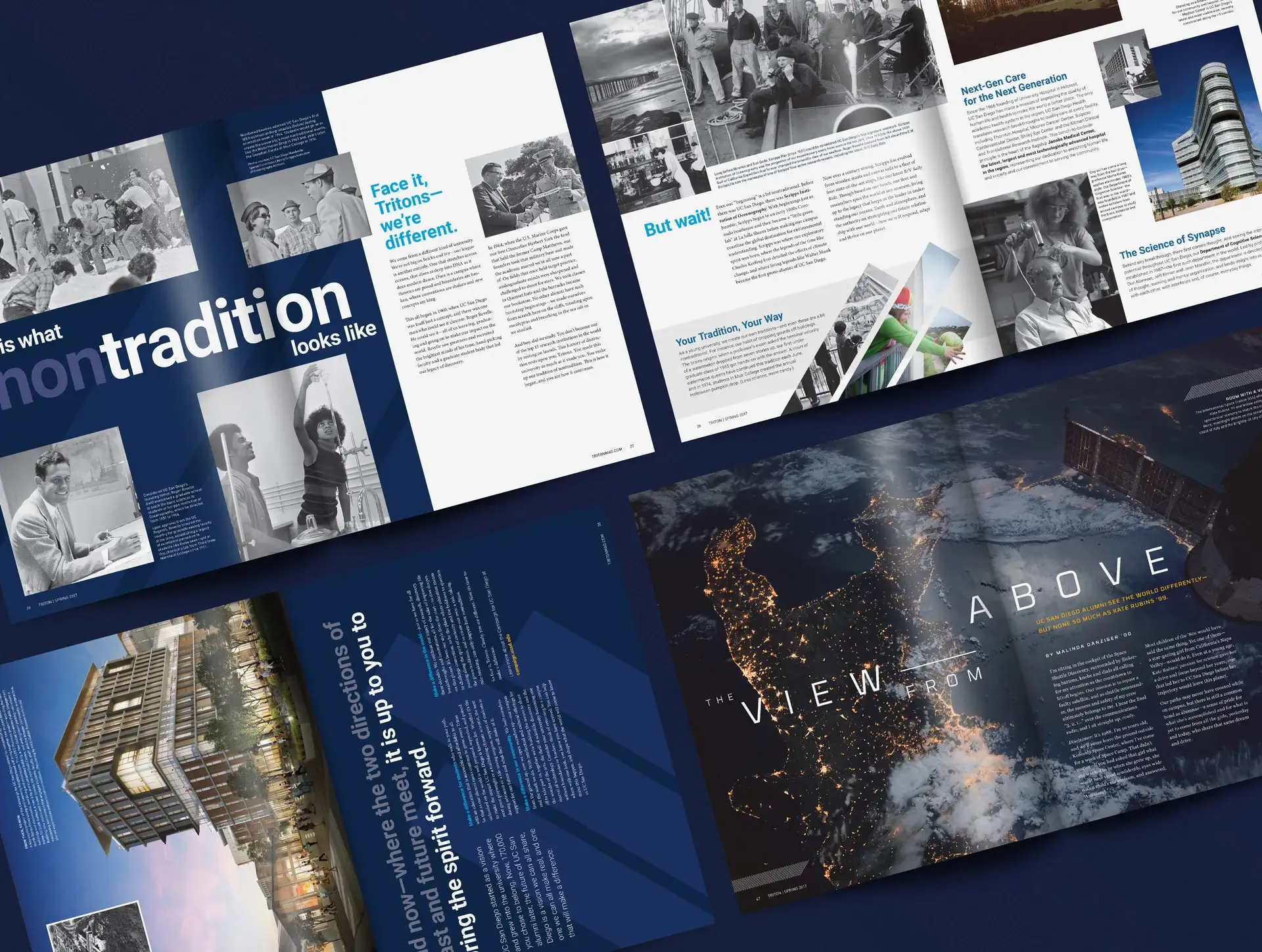
1. Completely flipping an issue
Nothing unites a university more than two words: Capital. Campaign. Whether united in excitement or anxiety—or likely a bit of both—campaigns have the unique power of rallying people together with a common concept.
UC San Diego’s latest campaign was all about “nontradition”—their shorthand for inventive ideas and intrepid character. The magazine took this theme as license to think audaciously in their campaign issue. The main feature This is Your Nontradition was designed to ground the concept in university history, and was a shoe-in for the cover. But then they secured an interview with alumnae Kate Rubins, an astronaut who had just returned to Earth.
As you might expect, an interview with an astronaut comes with amazing imagery. In Rubins’ case, her spacewalk shot was made for a magazine cover. Bumping the campaign would be institutional suicide—but what if there were two front covers?
Traina executed a double-cover, reversible magazine concept that read from the outsides-in. With attention to pagination, we arranged for the campaign feature to end in the exact middle of the book, where a vertically-oriented layout signaled the switch to read from the other end.
The concept was also brought throughout the issue’s editorial, as explained in the contents: “In the spirit of nontradition, we give you a magazine like none you’ve ever seen before. Just like space itself—no up, no down, no beginning, no end. Read it, turn it, live it, learn it: that’s Triton.”
Sign up for more Traina news, insights and updates.
By signing up to receive emails from Traina, you agree to our Privacy Policy. We treat your info responsibly. Unsubscribe anytime.
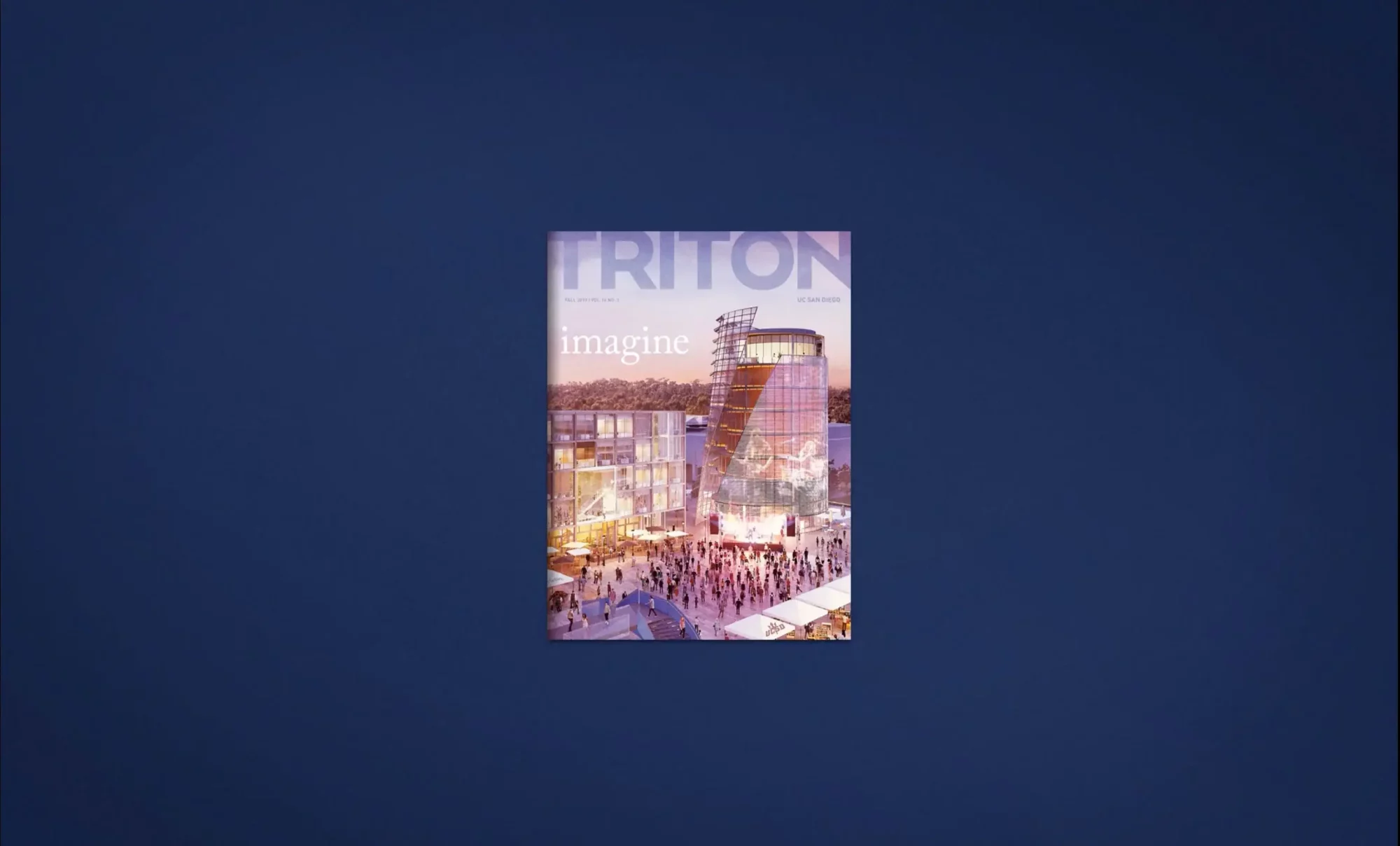
2. Doing a “cover feature,” literally
Part of the capital campaign were plans for the university’s first alumni center, to be announced in the magazine—again, with nothing less than the cover.
The pressure was on, but actual details of the building were scant. Image renderings were purely conceptual, and architects worried that showing them might backfire, should the actual building look nothing like it. Any images featured or use-cases detailed had to be clearly framed as “possibilities.” There were contingencies in production as well—with a project so big, there’s always a chance the announcement could be postponed, which would leave a feature-sized hole in the issue.
But this led us to the idea: What if the cover was the whole feature? There would be no need to fill pages with details we didn’t have, and if the debut was postponed, a new cover could be chosen quickly, without a scramble to fill interior pages.
Traina produced the magazine’s first gatefold cover, along with a custom message that unfolded along with panels of dreamlike imagery. We found space within the image to add substantive passages of copy, inviting alumni to imagine possibilities for the building—their future “home” on campus.
The cover was well-received by leadership and alumni alike—a solution that was stunning and celebratory, giving just enough information to inspire one to dream of possibilities.
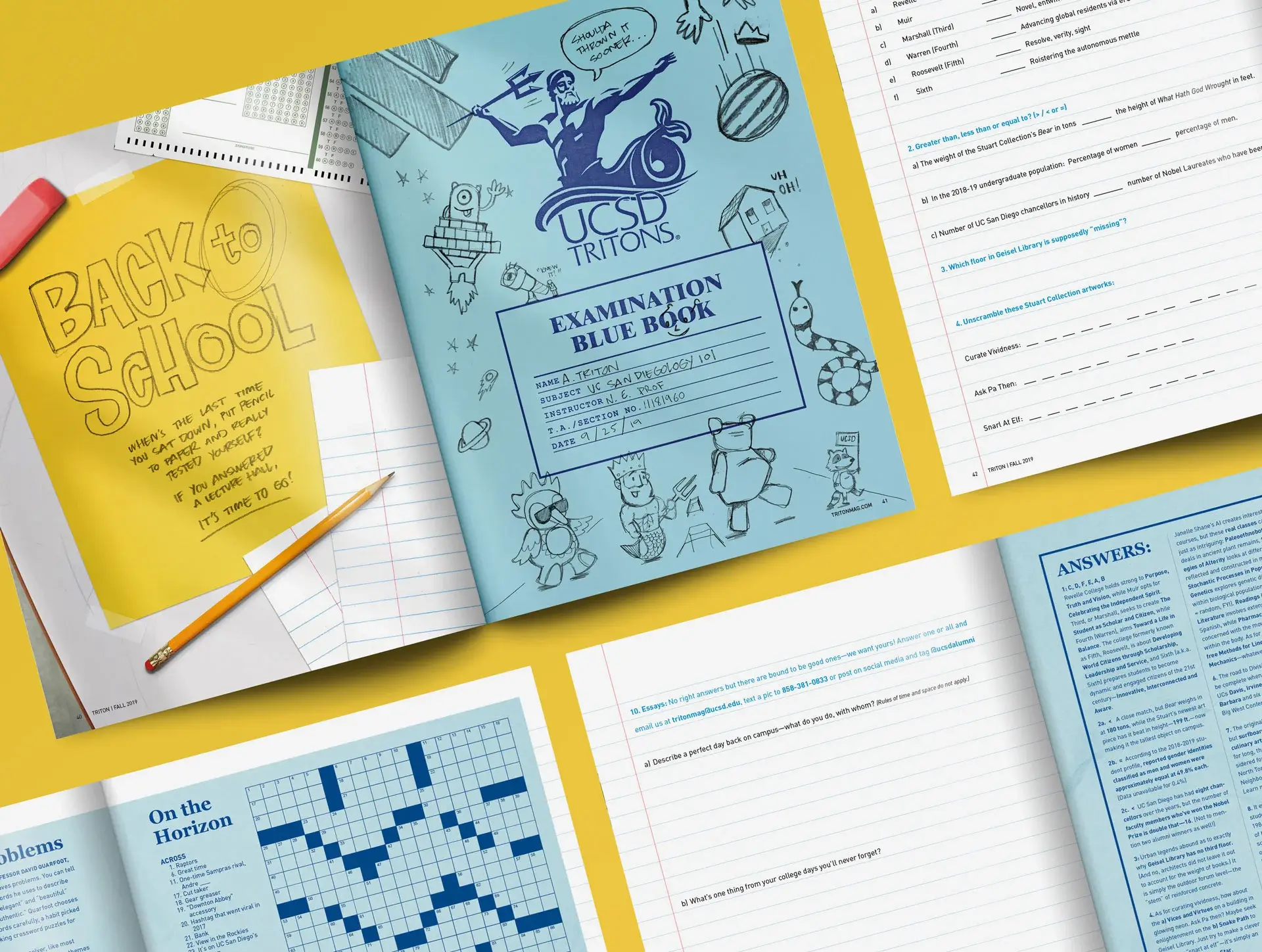
3. Turning a new page
And the backup plan if the Alumni Center got postponed? Meet the cover that could have been—the opener for a truly inventive piece of storytelling.
A bit of prologue: Triton editors love using design to turn magazine pages into something else. For example, for the university’s sci-fi-inspired collab with San Diego Comic-Con, we used redacted government files and a mock manila envelope to deliver a campaign poster depicting their library as the UFO it was always rumored to be.
This time the aim was nostalgia, so we brought alumni back to class with an interactive quiz of university trivia, disguised as the ever-familiar Examination Blue Book.
Triton wrote a narrative in classic quiz format and leveraged alumni for unique sidebar features – a custom crossword by a genuine New York Times puzzle-maker, and a true/false column to test if readers could tell real classes from those invented by AI.
Complete with essay questions, an answer key and grading rubric, the feature was a hit with alumni—nearly 1,000 logged on to the online version, and essay answers were published in the following issue. Moreover, the feature showed alumni just how well we know them—from hand-drawn doodles of campus landmarks, to a decidedly “nontraditional” approach to narrative.
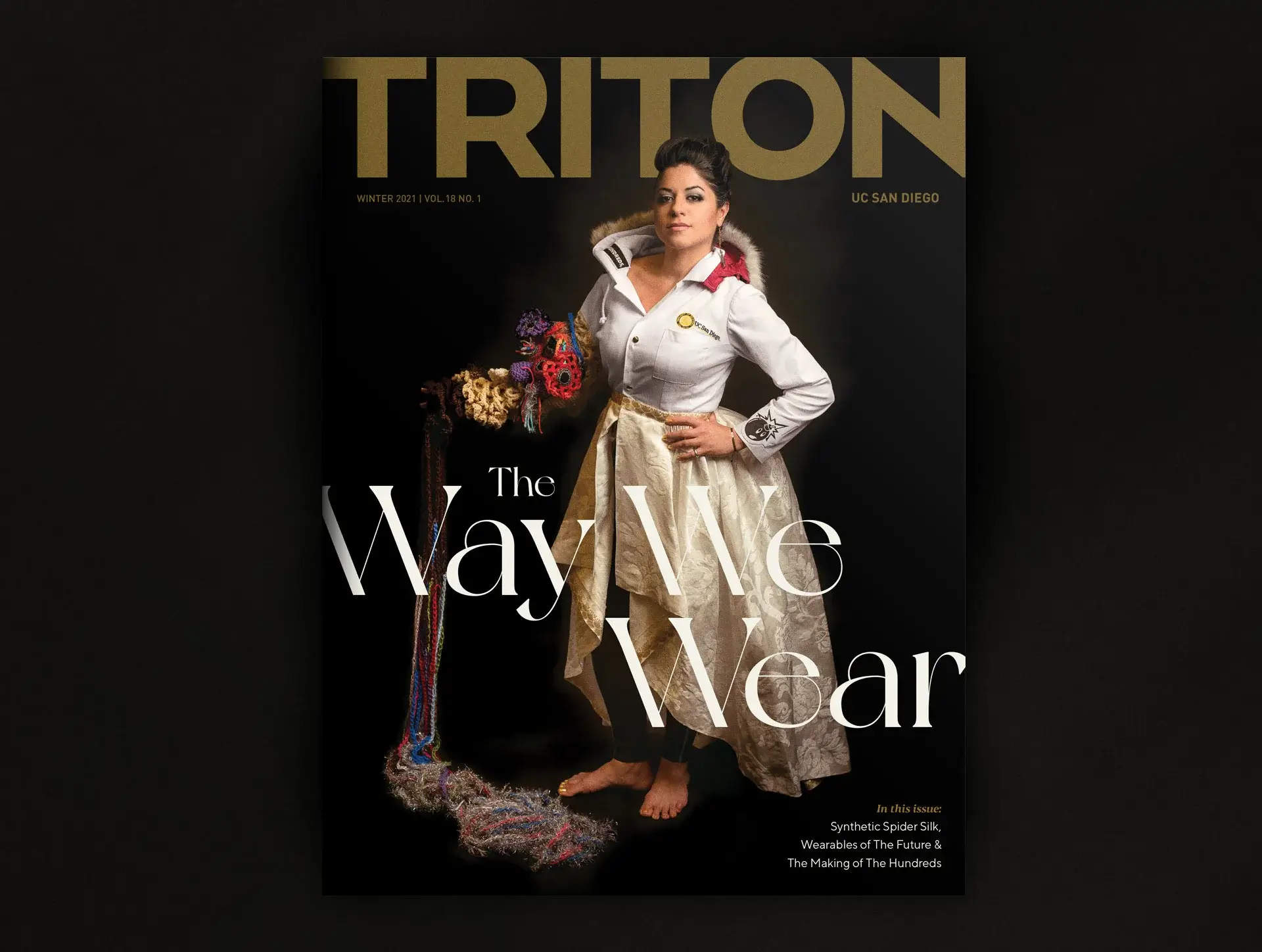
4. Making a dress of many disciplines
UC San Diego is well known for science and tech, but its award-winning theater and costume design program was due for the spotlight. The editorial team had an issue’s worth of fashion-inspired stories, many incorporating STEM subjects—a robotic dress, for instance, or algorithmic fashion designs and wearable biosensors.
The cover had to capture as many facets of “fashion” as it could—from the lab, to the stage to the street. At first, we envisioned a collage could make a motley sort of dreamcoat, but then we figured—with a world-class costume shop at hand, why not cut and sew and truly make something?
Partnering with costume designers and seamstresses, our imaginations ran wild in depicting the issues’ stories: a featured artist crocheted a multicolored sleeve, we sewed in streetwear sweatshirts, used a furred hood to reference arctic expeditions while wetsuit bottoms brought in the school’s oceanographic expertise.
The result was a striking product of interdisciplinary teamwork, very much keeping in the character of the university. With this cover, the magazine practiced what the university preached. “The most exciting thing about costume design is that you get to work with people who see the world differently, and who have different ideas than your own,” said one of our costume designers. “It was our collaboration that brought this piece together.”
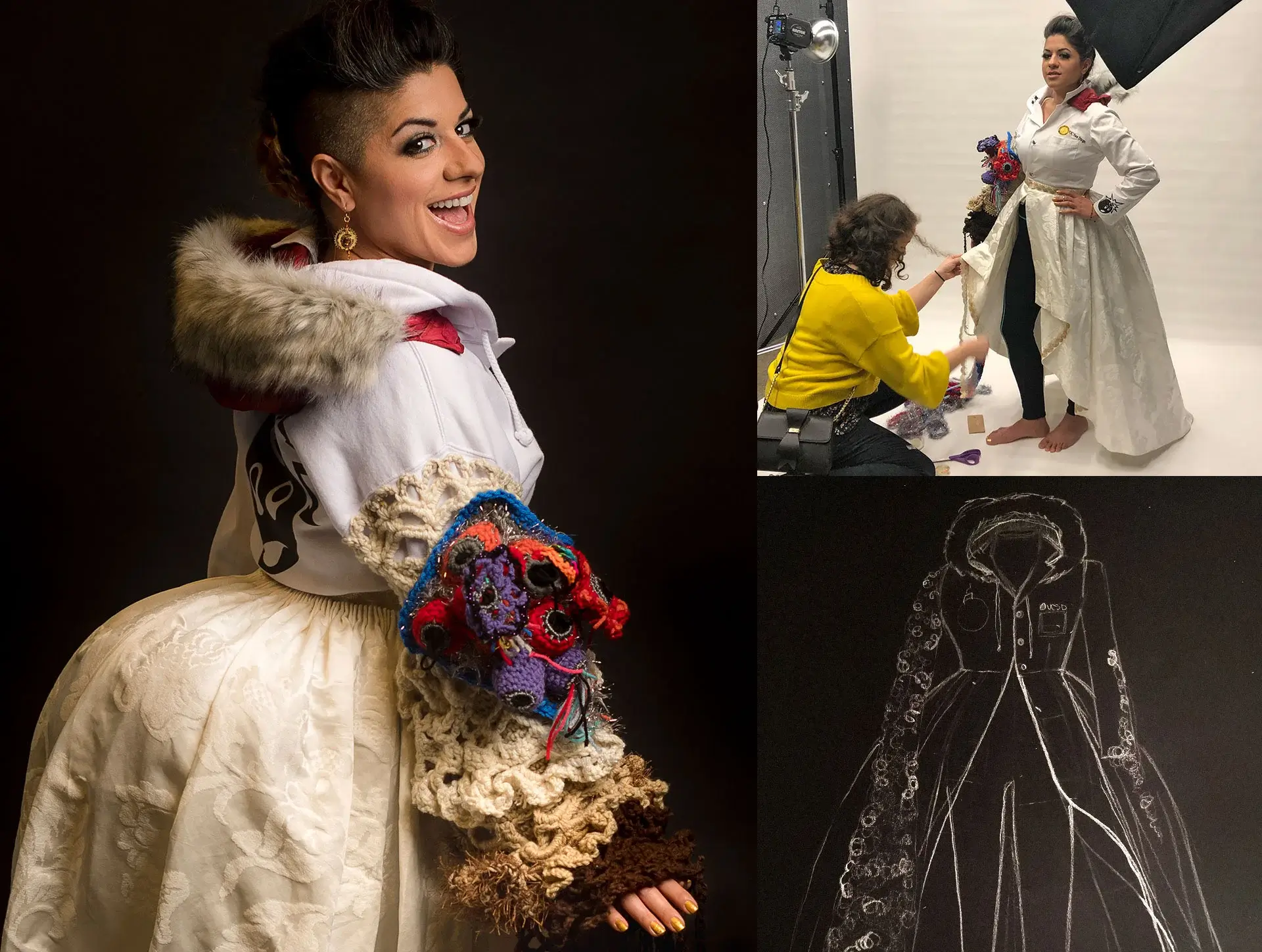
So it is every time, in every issue—a work of collaboration. Traina is proud to partner with many university magazines, always bringing the creativity, and—if desired—any degree of “crazy” and/or practical that you like.
Reach outJarrett Haley is Traina’s copywriter and a dad to three children growing up way too fast.